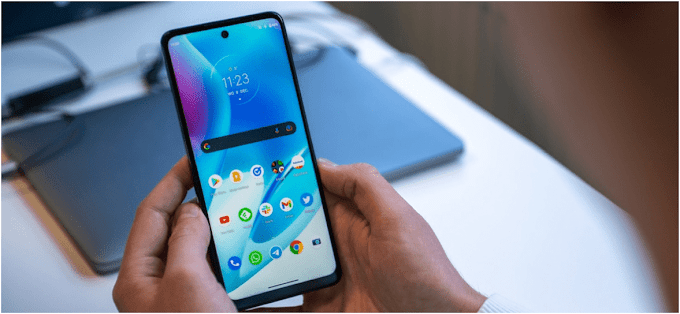
127.0.0.1:49342 is the critical issue that many developers and IT specialists face when troubleshooting community and server problems. 127.0.0.1:49342 is called the localhost, this address is crucial while testing, debugging and going with local programming. Here we will discuss in detail the methods of 127.0.0.1:49342, the frequent mistakes on it, and ways to fix them properly.
Definition of 127.0.0.1:49342
A loopback IP address representing your local system 127.0.0.1 is used in computer networking to route community traffic lower back to your very own gadget. The 49342 denotes a selected port by a utility or service to be able to speak. In aggregate, 127.0.0.1:49342 is used for testing and walking strategies that do not involve connecting to outside networks.
Important Features of 127.0.0.1
- 127.0.0.1 stands for the neighborhood gadget in a network.
- Routes statistics internally in no way leaving your gadget.
- Often used by developers for trying out packages.
The port variety (Ex., 49342) is essential for identifying a particular process at the device. Each application or service is assigned a port to make certain clean verbal exchanges.
Why 127.0.0.1:49342 is Important?
127.0.0.1:49342 is an important software checking tool in the industry of web developers. They can simply test their packages locally without leaking to the internet using this address.
Advantages of Utilizing 127.0.0.1
Safe Testing: No external system can access your local host, hence it is right for non-stop checking out.
Low Risk: This IP isn't normally centered by direct attacks,
Faster Debugging: Debug packages quickly without requiring a web connection.
Common Errors with 127.0.0.1:49342
Despite the simplicity, errors with 127.0.0.1 or unique ports like 49342 and 62893 can rise up. These are frequently due to misconfigurations or conflicts and let us explore some of the most common issues and their fixes.
Port Already in Use
You will encounter a war while multiple packages try to use the equal port.
Cause: An energetic manner is already the use of port 49342.
Solution: Identify the procedure and both forestall it or assign a brand new port on your software.
Connection Refused Error
This occurs while the application you are attempting to connect with is not working.
Cause: The server or application is not lively.
Solution: Start the specified carrier or take a look at its configuration.
Firewall Blocking Access
Sometimes, firewalls prevent localhost traffic.
Cause: Excessively restrictive firewall guidelines.
Solution: Add 127.0.0.1 and the port to the firewall exceptions.
Timeout Errors
Timeouts occur when the server takes too long to respond.
Cause: Slow processing or misconfigured server settings.
Solution: Optimize the server performance and check stability.
Address Binding Errors
Errors can occur if a configuration file incorrectly binds the localhost IP.
Cause: Incorrect binding in application settings.
Solution: Review and update the configuration file of the application.
Methods to Fix 127.0.0.1:49342 Errors
To resolve the mistakes related to 127.0.0.1:49342 or 127.0.0.1:62893 localhost ports calls for careful troubleshooting. Below are the steps for common issues:
Check Active Ports
You can make use of command line tools to observe which ports are active and which processes are attached to them.
Windows: Open the Command Prompt and type in netstat -a.
macOS/Linux: Type lsof -i :49342.
Terminate Conflicting Processes
If every other method occupies the port:
- Open Task Manager (Windows) or Activity Monitor (macOS).
- Identify the process using 49342.
- End the task.
- Restart the Network Services
The restart option can remedy many localhost problems:
Windows: Use ipconfig /flushdns to refresh the DNS settings.
Linux/macOS: Restart your free career with sudo systemctl restart network.
Modify Firewall Rules
- Ensure your firewall allows connections to 127.0.0.1 and the ports.
- Open firewall settings.
- Add an exception for the port 49342.
- Save changes and restart your application and assign a New Port.
- If the port remains unavailable, update your application to use a different one.
End Note
The IP addresses such as 127.0.0.1:49342 and 127.0.0.1:62893 deal with playing an important role in local utility testing and development. Although problems such as port conflicts, connection refusals or firewall blocks may also arise, they can be solved with honest troubleshooting methods.
You can successfully take a look at, debug and run applications to your local machine by knowing the fundamentals of localhost and imposing nice practices. For similar insights, discover reliable assets like Wikipedia to deepen your information.
With proper configuration and upkeep, 127.0.0.1 will become an effective tool for dealing with your improvement environment securely and successfully.
FAQs
What is 127.0.0.1 used for?
It is the loopback address for localhost which helps your system speak internally without involving an outside community.
What is so unique about port 127.0.0.1:49342?
Ports like 49342 allow particular applications or services to paintings. This is what identifies the precise procedure walking for your gadget that wishes localhost verbal exchange.
How do I unreserved port 49342?
Identify the process using the port with equipment like netstat or lsof, then terminate the process or assign a brand new port in your utility.
Can I get entry to 127.0.0.1 from every other device?
No, 127.0.0.1 is obtainable most effectively on the neighborhood device. To permit outside access, you'll want to use your device's public IP.




![Performance Marketing - What Is it & How It Works [+ 6 Tools You Can Use]](https://blogger.googleusercontent.com/img/b/R29vZ2xl/AVvXsEj0akcIPU36HHfqWoYrb2LCMNG8OvxPb9drUYKWJZvSXmfbJG0OrjN5jfzTFDmT-9MKcuZt-G-66PiLlIVjgX1DwCNzHeIMW0pjW7W3IB2rZYzx4ISbL2T6JC4M38eubqHxQ3e71l2_n7oxh2f2QdV3d1prJ6z9HQNsSyfjtO18diLxEZg-5wD-I6RINFY/w680/performance_marketing-min.png)





0 Comments